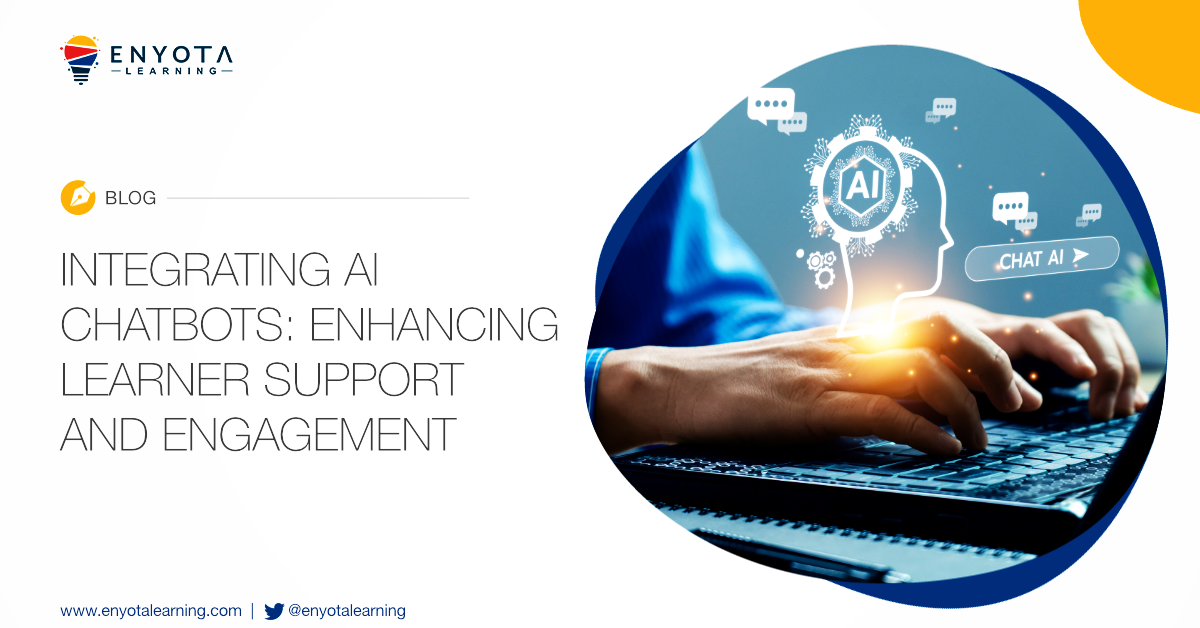Artificial intelligence is here finally! And this time, everybody is sure about it. We have seen image creation tools, chat and search engine AI, and even voiceover producing bots capable of mimicking your favorite celebrity’s voice. We have all the tools currently needed to build the many eLearning assets or learning objects needed to compile and build an eLearning course. Yet, some of us may wonder if taking this approach is correct. And if it is, are there any precautions to consider? In this article, we are talking about the possibilities of building eLearning using artificial intelligence (AI) and if it will work for everyone.
Components of a Good eLearning Course
In theory, everybody has their own way of doing things, and this concept of ‘many ways to do something’ can be applied to building eLearning courses as well. One Instructional Designer may approach the idea of building eLearning a certain way, while another may differ in their opinion. Understanding this concept is very important because when using AI to build eLearning courses, the number of ways in which you can do something increases dramatically, leaving you with more options than before. Remember this because no definite way is correct, and it finally comes down to preferences of both learners and training facilitators when building eLearning-based training.
According to us, there are 7 primary components to building good eLearning courses:
-
Content
Good quality text, images, video, and other supplementary content forms the backbone of every eLearning course.
-
Design
Both course design which allows learners to enjoy the eLearning and responsive design that allows the course to operate on multiple devices is important.
-
Navigation
An eLearning course is like a journey. We mentioned earlier that eLearning comprises learning objects combined to form an eLearning course. For learners to interact with the multiple learning objects, they need to navigate from one object to another. To facilitate this navigation, an eLearning course must possess seamless navigation.
-
Animation
Sometimes an eLearning course, like one about a technical product, just needs animation to correctly deliver the training message. Other times, animation adds towards making the training more engaging.
-
Multiple Learning Channels
eLearning is often a superior format of training because it supports multiple learning channels. Learning channels are nothing but avenues where learners can interact with eLearning, like in-classroom sessions supplemented by eLearning, or instructor-led or virtual sessions, or pre-recorded training modules, and so on.
-
Practice + Feedback
Any eLearning or training is incomplete without practice + feedback modules where learners are tested for their gained knowledge.
These 7 components together make great eLearning courses. Now, let’s analyze which of these components can artificial intelligence assist with when building eLearning and where does AI fall short?
Limitations of Building eLearning Using Artificial Intelligence
Without going into detail, the only component that artificial intelligence can help build to support your eLearning course is the very first component of ‘content.’ But even then, AI is limited by the types of content it can build.
Images, text, and voiceover are three content types that AI can do well. However, when it comes to videos, AI can currently only build avatar-based videos. But that’s not all, when building images, AI is still unable to correctly portray some objects like the human face and fingers on a human hand.
Even more shocking is that users of popular image creation tools like DALL-E and Mid-Journey are finding it extremely difficult to create series of images with consistent looking characters and surroundings! Meaning if you’re looking to build an eLearning course consisting of 20 slides using a ‘fixed set of characters’ in multiple poses and varying background settings, be ready for a hard time because it’s virtually impossible to produce the same character and background consistently using these tools!
To build eLearning using AI, one needs a reliable set of artificial intelligence tools that can repeatedly and accurately perform the task of accomplishing all 7 components. However, in the present situation, we can use AI to achieve only the first component of building content and even then, AI cannot accurately and reliably build all types of content.
What about the remaining 6 eLearning components?
Can AI achieve any of them?
If you ask about designs, then AI can describe some designs elements to incorporate into your course and at best produce an image or two that visually show some design schemes. At best, you can find some inspiration from the AI produced designs and build upon one yourself, that is if you have the experience, expertise, and the tools needed to build upon the AI produced designs.
If you talk about navigation or animating the course, there is very little that AI can do except for describe a possible navigation flow and provide a few images for you to use as inspiration to build proper animated scenarios.
Finally, we wouldn’t recommend relying too much on AI to determine the type of learning channels because the current chat AI is nothing but an algorithm that tries to predict what the next word in a sentence should be in order to sound human!
Additionally, other than mathematical calculations, AI is incapable of performing real-world problem solving that relies on human judgement and sane decision making by keeping future outcomes in mind.
To top everything off, experts agree that AI cannot perform calculations that require common sense or intuition, such as understanding sarcasm or irony. Nor can AI perform calculations that require creativity or imagination, such as creating a new piece of art or music or animations!
Is it possible to build eLearning using artificial intelligence at the current level?
Well, yes, but only if you and your learners do not care about:
- Personalization of content (including situations/scenarios, activities related to processes specific to your organization).
- Personalization of design specific to your organization belief, culture, brand, etc.
- Consistency in the assets like images containing characters and background.
- The lack of instructional design principles unless a seasoned training developer has implemented them.
- Little to no variety in training because AI can only design images, write content, and provide a voiceover.
- Inconsistencies in design and navigation – this is only applicable if the training developer completely relies on AI to help with the designs because of their own inability to be meticulous at designing. A seasoned Instructional Designer should not have too many problems in this department.
- The lack of animations even in courses where animation is needed because AI is very limited in the types of animations it can build.
At present, it is only suitable for seasoned eLearning development teams!
Yes, you read it correct! AI is superb at building limited content types and providing inspiration to seasoned eLearning developers who can build upon the ideas presented to them by the machine.
Whereas an inexperienced eLearning developer or a small team of eLearning professionals will still not be able to achieve much with AI in its current form. Since building videos, determining designs, being consistent with characters and settings, optimizing the navigation, animating videos, and determining the learning channels is still a long shot away from what the current AI models can achieve, it’s safe to say that AI currently can only assist teams of eLearning developers with immense experience. In the many areas where AI falls short, only experience and human efforts can make it through.
Concluding
Building eLearning using artificial intelligence sounds like an easy task, but it’s not. You may sometimes come across tools that claim to do everything for you, but these are more than often just template-based software with massive limitations that only experienced eLearning developers can solve.
If you are genuinely interested in building top-quality eLearning courses, look no further than eNyota Learning. We have been building custom eLearning courses since 2007 for some of the biggest global businesses, assisting their L&D teams to realize their training and development goals. Reach out to us at contact@enyotalearning.com, or fill this callback form. Also, test our LMS for thirty days free at Abara LMS.
Also read about how




